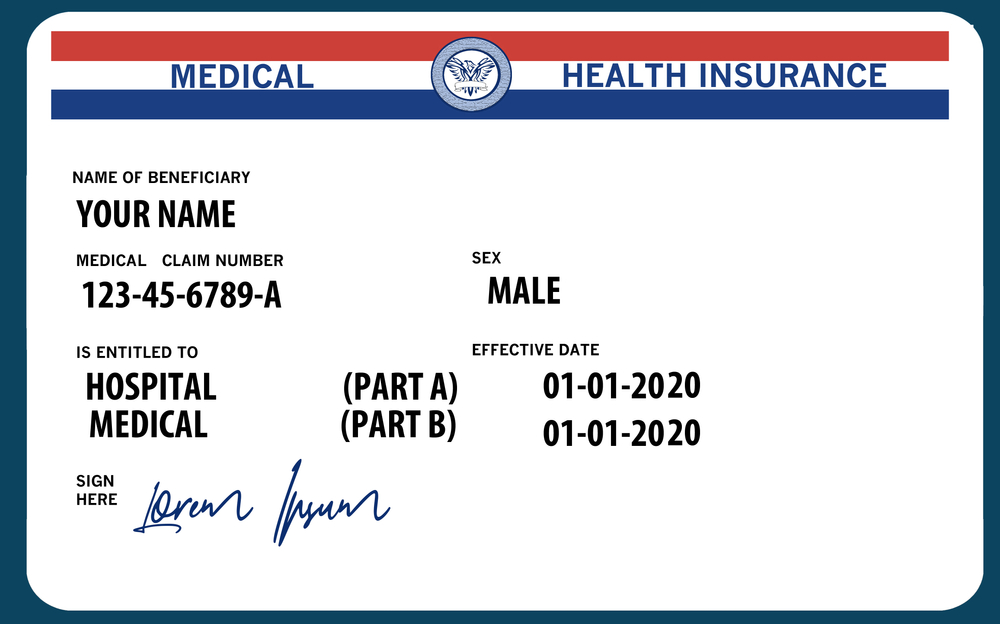Medicare enrollment can be confusing, and we’re here to help. Let’s talk about when you should sign up for Medicare.
First, Medicare has different parts and different enrollment periods. When you sign up will depend on your situation and the type of coverage you need.
Signing Up for Parts A and B
Automatic Enrollment or Initial Enrollment Period
Parts A and B are referred to as Original Medicare. Most folks are automatically enrolled in both parts of Original Medicare — when they turn 65 and receive Social Security benefits. Automatic enrollment means your red, white, and blue Medicare card will arrive in the mail three months before your 65th birthday.
If you’re not automatically enrolled, you can sign up for Part A — if you’re eligible — any point during or after your Initial Enrollment Period (IEP) begins. This is the seven-month period that:
- Starts three months before the month you turn 65
- Includes the month you turn 65
- Ends three months after the month you turn 65
When you coverage starts will depend on when you enroll.
Sign Up When You’re First Eligible for Medicare!
Most of the time, if you don’t enroll in Medicare Part B when you’re first eligible, you’ll face a late enrollment fee. And unfortunately, you’ll have to pay the penalty for as long as you have Part B.
Note: Waiting until the month you turn 65 (or the three months after you turn 65) to enroll will cause a delay in Part B coverage, which may cause a coverage gap.
General Enrollment Period
The General Enrollment Period is from January 1 to March 31 each year. You may sign up for Medicare Part A and/or Part B during this period, if the following apply:
- You didn’t enroll when you were first eligible.
- You’re ineligible for a Special Enrollment Period (more on this below).
You’ll need to pay premiums for Part A or/or Part B, and your coverage will begin on July 1.
Special Enrollment Periods for Special Circumstances
As soon as your IEP ends, you may be able to sign up during a Special Enrollment Period (SEP). If you get coverage through an employer group health plan, you get a SEP to join Part A and/or Part B anytime — as long as:
- You or your spouse is working.
- You’re covered by a group health plan through the employer.
Also, you have an eight-month SEP to join Part A and/or Part B that begins at one of these times (whichever occurs first):
- The month after the employment ends
- The month after group health plan insurance — based on current employment — ends
If you sign up for Medicare during a SEP, you typically don’t pay a late enrollment fee.
Signing Up for Parts C and D
Medicare Part C, known as Medicare Advantage, is an alternative to Original Medicare. Since it’s a private plan, you’re not automatically enrolled. You can enroll in a Part C or Part D (prescription drug) plan during specific times:
- your IEP
- the AEP (below)
- a SEP, or
- during the Medicare Advantage Open Enrollment Period — January 1 to March 31.
You have options for when you can sign up (or make changes to current coverage), and everyone’s situation is different…
Annual Enrollment Period
When you have Medicare, you can add, change, or drop your Medicare Advantage or Part D plan coverage for the following year — during the Annual Open Enrollment Period — which is October 15 to December 7.
Medigap Open Enrollment Period
Finally, there’s one more period to discuss — the Medicare Supplement (Medigap) Open Enrollment Period. If you want to supplement your Original Medicare benefits to help with extra costs, you have six months to enroll in a Medigap plan, beginning the first day of the month you turn 65 — as long as you’ve signed up for Part B.
As you can see, it’s easy to mix up the Medicare enrollment periods! Plus, it doesn’t help that they’re called different things. Consider working with experts who know the industry inside and out.
Get Help with Medicare Enrollment
If you’re turning 65 and feeling uncertain about Medicare enrollment, you’re not alone. Contact an agent at Trusted Senior Specialists. We’re happy to help!







